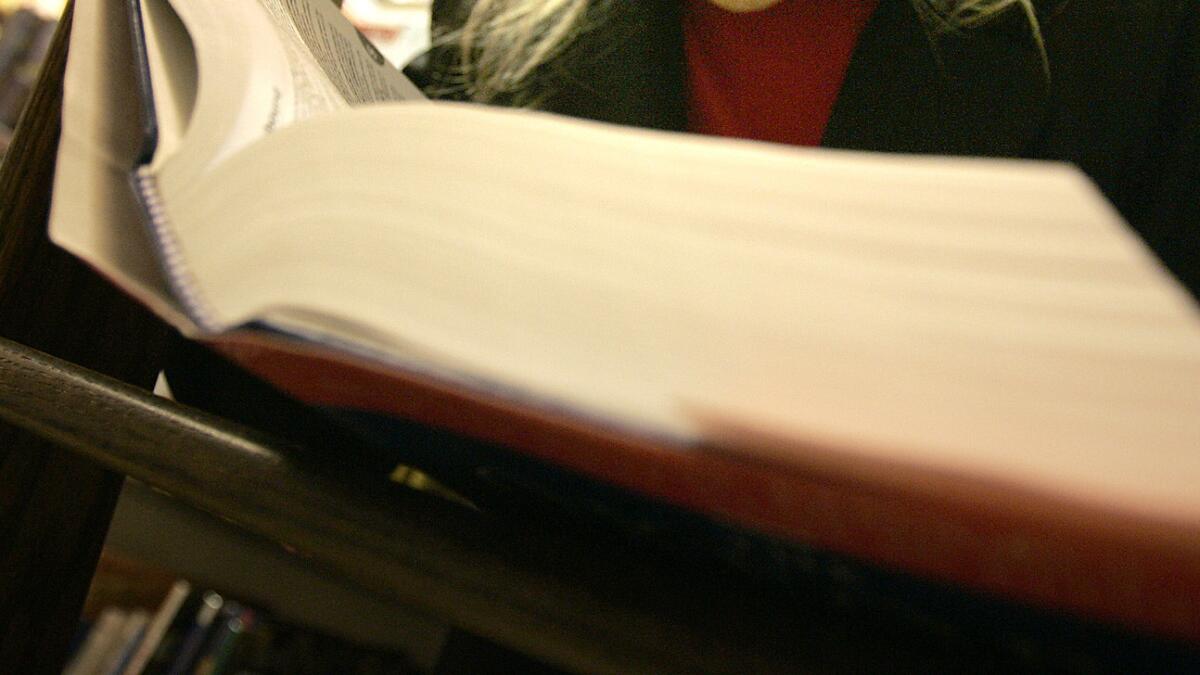A Word, Please: Punctuation protocols can be tricky, but there are rules to follow

- Share via
Recently in this space we talked about how, when two punctuation marks bump up against each other, one can sometimes preclude the other.
For example, a phrase that would normally be followed by a comma that you instead set off with dashes drops the comma: “If you want to have a great Sunday — and by great I mean lazy — hit the beach.”
Normally, there would be a comma at the end of that phrase that ends with Sunday. The dash renders it unnecessary.
But there are plenty of situations in which one punctuation mark comes immediately after another and both of them have to learn to coexist. Here are a few.
Period after closing parenthesis: If you write a sentence that ends with an internal parenthetical thought, you end up with a period immediately after a closing parenthesis (like this). That’s because when parenthetical information is incorporated into the sentence, the period comes after.
Period before closing parenthesis: On the other hand, when the parenthetical is a standalone sentence, the period goes inside. (This sentence is an example.) And, once again, we have two punctuation marks living in perfect harmony.
Comma after parenthesis: If your parenthetical info appears anywhere in your sentence where you’d normally use a comma, proceed as usual: If you like pizza (and I know you do), check out Gianni’s.
But there’s never a time when you’d use a comma immediately before a closing parenthesis because the parenthetical information doesn’t continue after the parentheses close up shop.
Apostrophe with a period, comma, exclamation point or question mark: In dialogue and slang, it’s common for an apostrophe to replace the last letter of a word. That’s especially true when the last three letters are ING: Jed just kept walkin’ and talkin’. If one of these appears at the end of a sentence or clause, the punctuation mark comes after, not before. That’s because the apostrophe is pinch hitting for a letter, making it part of the word.
Apostrophe with single quotation mark: This one’s harder. Sometimes one of those words that ends in an apostrophe can appear at the end of an internal quotation that ends with a single quote mark: Jed said, ‘I’m walkin’’ and he wasn’t kidding. At the end of walkin, the first apostrophe-looking mark is indeed an apostrophe. But the second one is a closing single quotation mark. You won’t encounter these situations often, but when you do, remember that each mark has a job to do.
Apostrophe with comma and single quotation mark: Take our Jed sentence above and put it at the end of a clause and you get three punctuation marks in a row: “Jed said, ‘I’m walkin’,’ though he was really running.” Confusing, but conquerable if you proceed with caution. An apostrophe stands in for a G, then a comma ends the clause, then a single quotation mark ends the quotation.
Apostrophe with comma, single quotation mark and double quotation mark: Are you sitting down? Here’s what you get when our last example appears all the way at the end of a sentence when the larger quotation and the internal quotation end at the same time: “I heard Jed when he said, ‘I’m walkin’.’” Apostrophe, period, single quotation mark, double quotation mark. It’s a pileup worthy of a drive-time radio traffic report. But it’s right.
Question mark with exclamation point: Sometimes movie or book titles or even proper names end in an exclamation point. Occasionally that title or name appears at the end of a question: Did you see Airplane!? The reverse is also possible, but less common: I loved “What About Bob?!” In AP style, those titles would be not in italics but in quotation marks, adding to the pileup: I loved “What About Bob?”! If all that appeared within a larger quotation, you could be forgiven for giving up on punctuation altogether: Beth said, “I loved ‘What About Bob?’!”
